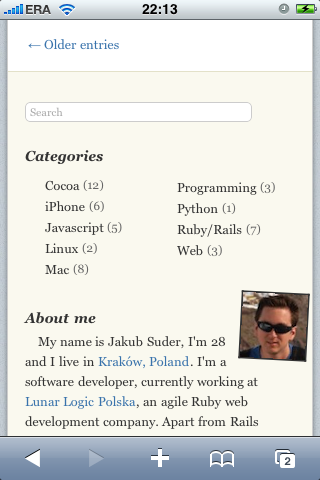Tips for creating mobile sites
I’ve recently updated my new blog’s layout to support mobile phones, iPhone in particular (since that’s what I’m using ;). Here’s how it looks now:
I decided to use the same HTML for both versions, and use CSS media queries to define how the mobile version differs from the main one – I thought this was the cleanest and simplest solution in this case. For more complex sites, it probably makes more sense to have the two versions completely separated.
Surprisingly, it was quite easy to do once I figured out what exactly I needed to do. Turns out, the hardest part is apparently knowing what to put in your header and what media queries to use. Here are some tips and suggestions if you want to make a mobile version of your site too:


